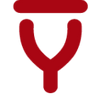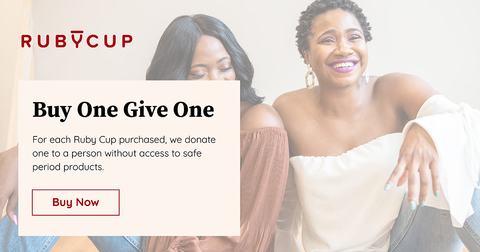Engaging international youth workers on how to integrate menstrual health and hygiene (MHH) into their existing programs at the 2019 Period Empowerment Network Project Training In Nairobi, Kenya.
Written by Alfred Muli,
Regional Program Manager-East Africa, Ruby Cup
Contributions made by Danielle Keiser, CEO & Executive Director, Menstrual Health Hub (MH Hub)
Our friends at Terram Pacis brought together 22 youth workers from 10 organizations (Kenya, Uganda, Spain, Portugal, Sweden, Belgium, Poland, Norway, India and the Philippines) for one week in Nairobi to develop pedagogical materials and activities to raise the profile of menstrual health and hygiene (MHH) within their existing programmes, which the youth workers will be able to use as guides in their home countries.
Together with Danielle Keiser, CEO and Executive Director of the Menstrual Health Hub (MH Hub), a community of practice for people working across menstrual and female health, we lead an intensive workshop focused on how people can use of progress around MHH research, education, policy and innovation to drive social change and make menstruation matter in their own countries.
The focus of the training was on informal learning; the training was not classroom-based where details such as seating arrangements matter. For example, we sat in circles or semi-circles rather than a classroom set up and all the sessions were highly participatory including games. This made it very fun and engaging and created a safe space where we could share experiences and solve problems as a group. I can see this working well with the groups we run as part of our education and donation programs.
Each team had conducted small scale research in their countries as part of the Period Empowerment Network (PEN) program they are all a part of. These findings are being used to develop a menstrual health education handbook for young people to use in informal learning spaces like the ones described above.
This handbook will be distributed throughout the Period Empowerment Network to be implemented in the different country programs which are part of the PEN project.
Some youth workers translated their findings to songs, dances, skits and games that communicated key messages around breaking the silence on menstruation and tackling stigma and taboos associated with menstruation.
We had fun revisiting our biology class learning about body changes and the vital role hormones play in the menstrual cycle.

Danielle Keiser of the Menstrual Health Hub discusses parts of female sexual and reproductive anatomy with the men of the PEN training. Image: Terram Pacis
Different countries, same gaps in knowledge
I was interested to learn through our sharing sessions that knowledge gaps around menstruation are very similar around the world. This is backed up by research on menstrual taboos around the world.
Whereas the focus of menstrual health and hygiene work has been on the global south, it became very apparent that education about MHH is lacking in the global north as well. We discussed how most of us tend to ignore myths in our own countries or regions and talk of ‘myths in those other places’. In so doing, we forget to end the shame and silence associated with menstruation in our own houses.
For example, one of the youth workers representing Belgium mentioned that we needed to take a closer look at the link between menstrual health and mental health to ensure that people who menstruate’s psychological needs are also being addressed.
Scaling up through advocacy & policy change
With the understanding that we can only reach more people through coordinated advocacy and policy change, we explored how developing country-based policies and research have effectively tackled myths, stigma, and taboos surrounding menstruation.
One such policy is reducing or eliminating the tampon tax in many countries, most recently in Germany, which just passed legislation that the tax on menstrual products will go down from 19% to 7% as of January 1, 2020.
I shared my experience of working with key stakeholders in the East Africa region.
In #Session2, with @MHHub_Global, @mulislera & @rubycup, participants exploring how developing country-based policies & research can effectively tackle stigma around menstruation.
— TERRAM PACIS (@TerramPacis) October 22, 2019
Co-funded by @EUErasmusPlus to advocate for #PeriodEmpowerment, #PeriodTalk & #MenstrualHealth pic.twitter.com/Q2s03ZmTUm
We, at Ruby Cup, have been involved with the development of a Menstrual Hygiene Management Policy for Kenya that was approved by the Cabinet on 21st of November 2019. Our engagement was through the technical working group meetings that are coordinated by the Ministry of Health; giving a platform to both state and non-state actors to share good practices, give input to policy formulation and development as well as network and foster partnerships. This ensures diverse voices are heard.
We looked at how youth workers can create supportive and inclusive spaces for youth to become familiar with the purpose of menstruation. The team learned how to develop advocacy and policy briefs targeting high-level stakeholders.

Alfred and Danielle conducting the PEN Training in an informal setting. Image: Terram Pacis
Focusing on Women-Centred Design (WCD)
We took time to understand the limitation of Human-Centered Design and how we can utilise the Menstrual Health Hub’s new design approach called ‘Women-Centered Design’ (WCD) to develop interventions that consider the biological, sociocultural, economic and environmental factors that differentiate women’s* lives from mens’. WCD puts these lived experiences at the centre of innovation, offering a fresh new way of designing solutions for female health-focused products and services. (*Inclusive note: Not all women menstruate and not all who menstruate are women.)
The team applied the WCD concepts to develop campaigns and workshops that would address MHH issues in their contexts such as rural Kenya and Uganda, informal settlements in Nairobi, universities in Poland as well as young people in cities like Brussels, Lisbon, Zaragoza, Delhi etc.
Developing an agenda for menstrual health advocacy among young people
We took a deeper look at the progress around MHH policy, research, innovation and education that is already out there before developing the agenda and guiding content for the actual activities the teams will do in their home countries to create safe spaces for fellow young people to discuss menstruation openly and positively.
We also had the opportunity to visit a safe space in Kayole-Matopeni in the Eastlands parts of Nairobi where one of the Kenyan partners, Rural to Global Organization, has been implementing a menstrual health project with both boys and girls.

Rural to Global’s ‘Red is Cool’ menstrual health awareness activity. Image: Terram Pacis
Different country teams shared their experiences with the Kayole team and confirmed how similar the challenges (such as silence associated with menstruation and limited support from fathers and other male figures) and the opportunities (such as using art, creating safe spaces for both boys and girls and using puberty as the entry point to discuss body changes and the vital role hormones play will go along way in normalizing menstruation and breaking negative social norms) are across geographies.
Do you want to follow the progress of this great project? Here is a link to the valorisation plan.





